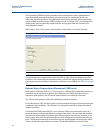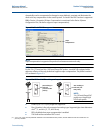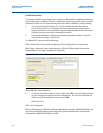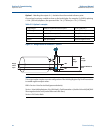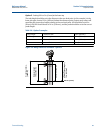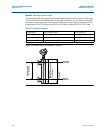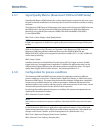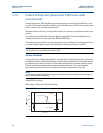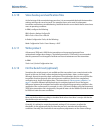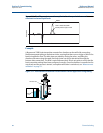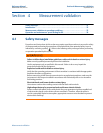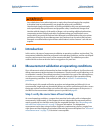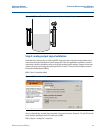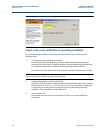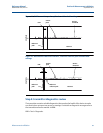
48
Reference Manual
00809-0700-4530, Rev AA
Section 3: Commissioning
September 2013
Commissioning
3.3.9 Probe End Projection (Rosemount 5300 Series solids
measurement)
Probe End Projection (PEP) handles long measuring ranges on media with low dielectrics, such
as solids. If the signal is not reflected at the surface, the Rosemount 5300 Series uses the probe
end as a reference to calculate the actual level.
When the surface echo is lost, use the probe end echo as reference to calculate the surface echo
position
See the Rosemount 5300 Series Reference Manual "Appendix C Advanced Configuration" for
configuration instructions (Document No. 00809-0100-4530).
This probe end echo must be in a consistent position. It must either be free hanging at all times
to create a negative pulse or it must be attached such that a positive pulse is created.
NOTE:
This function is not compatible with SQM or DVC.
Surface threshold
A true surface echo calibrates the Dielectric Constant (DC) used by PEP and a false surface echo
miscalibrates the DC used by PEP. Therefore, set the surface threshold as low as possible without
ever allowing false echoes to break it. For the probe end threshold, automatic setting is mostly
OK, but must be low enough to ensure probe end pulse detection. It is recommended to
perform the procedure once with an empty tank, and once with product in the tank.
NOTE:
Assure that the tank settings Mounting Type, Probe Type, and Probe Length have been assigned
correct values before continuing.
In RRM, PEP is set using:
RRM > Setup > Advanced > Probe End Projection
Figure 3-10. Probe end projection
2000
2000
1000
Probe end offset
Probe end
pulse
Product surface
Probe end
0
- 1000
- 1500
0 1.0 2.0 4.0 6.0
Distance, m



